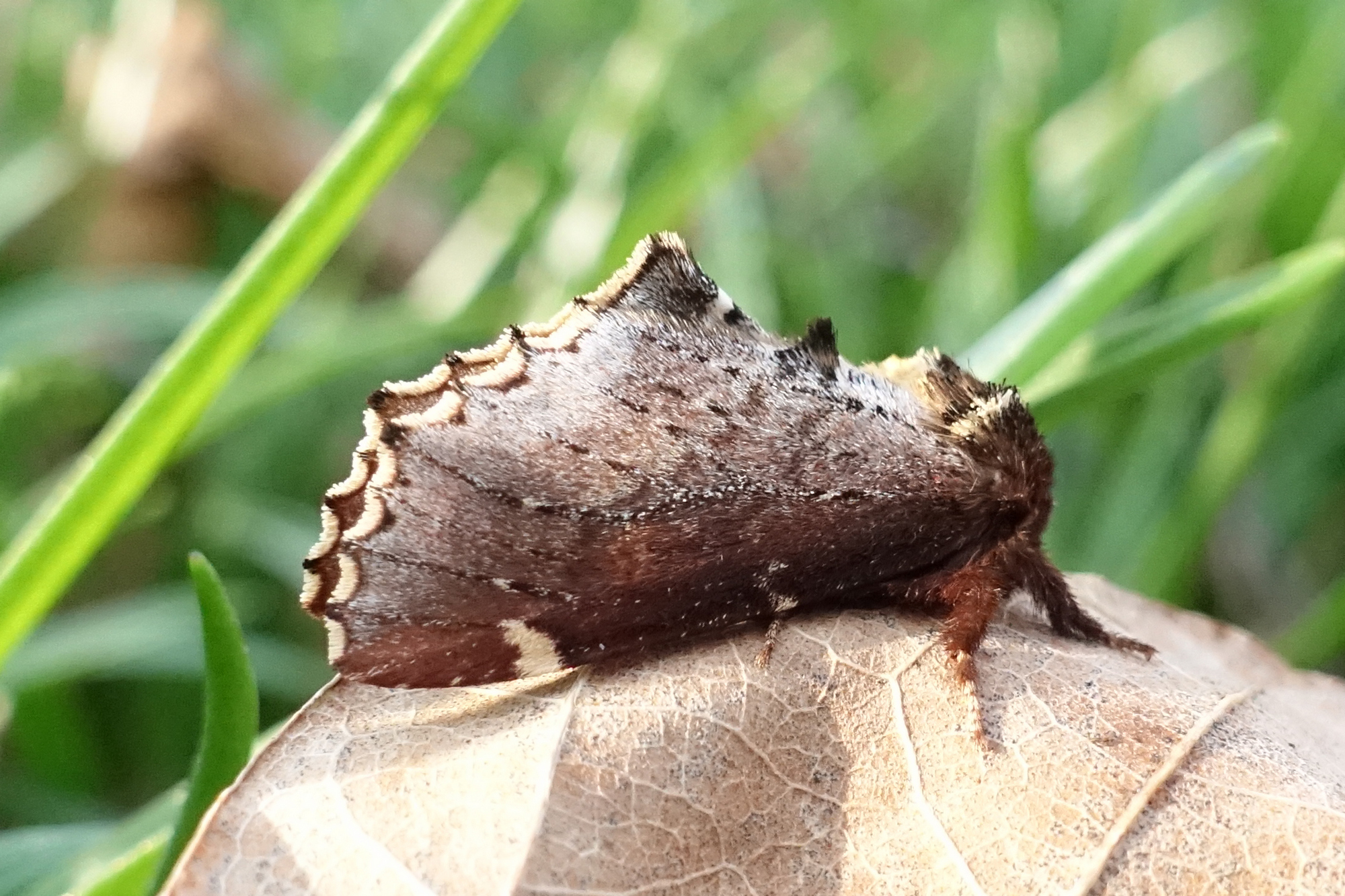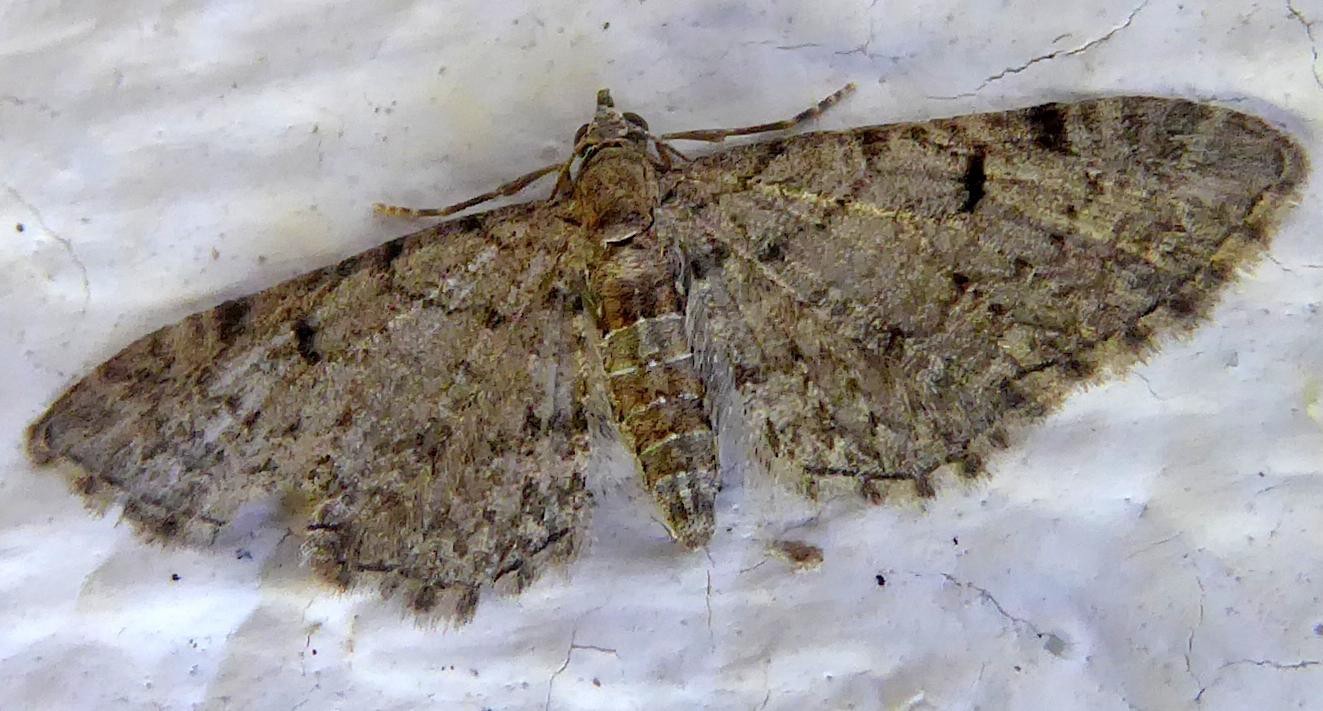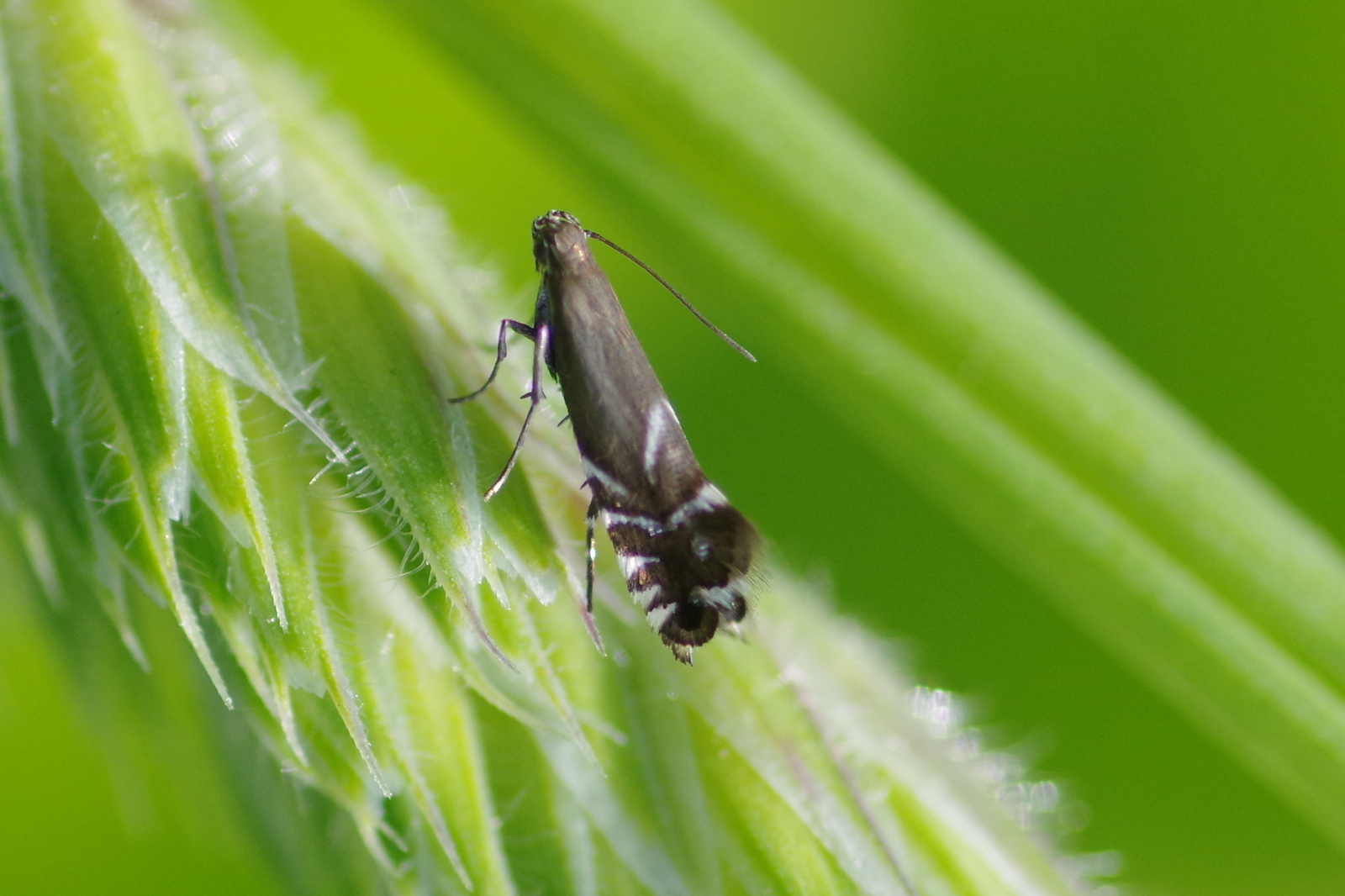This is the moth for March as the majority of records occur during this month, peaking around the second week. Some moths are found in February and they often hang on until the end of April but the March Moth is well named. It is found throughout Scotland in the wooded lowlands being absent in the uplands, the far north and the islands. The Scottish records show a lot of new areas for this moth since 2000 although some of these might be from the more dedicated recording at this time of year stimulated by the Moth Atlas. Over the UK as a whole the recorded abundance of this species has fallen by 63% since 1970 although it is not clear why.
The moths that come to light are males as the female March Moth is completely wingless and can be seen crawling around on the trunks of trees at night. The males are very distinctive with their elongated triangular shape formed by their overlapping wings when at rest.
After mating the females lay their eggs in batches around a twig disguising them with hairs from the big tuft of scales at the tip of her tail. The hatching looper caterpillars are pale green with pale green heads and narrow pale yellowy-white stripes and can be found on many different trees especially oak, hawthorn and fruit trees.
There are over 360 records from D&G from all three vice-counties demonstrating that it is a quite common moth. However, all of these records are of males (except for a few records of the caterpillars) either coming to lights or found resting during the day on tree trunks. So for this year the challenge must be to find the first female for D&G – which must be possible! There are, of course, other wingless female moths around but the March Moth has no visible wing stumps at all, is a characteristic pale brown all over and has a distinct tuft of hair at the tip of her abdomen. Good pictures can be found on the UK Moths website https://ukmoths.org.uk/species/alsophila-aescularia/female/ . Who is going to find the first one?




